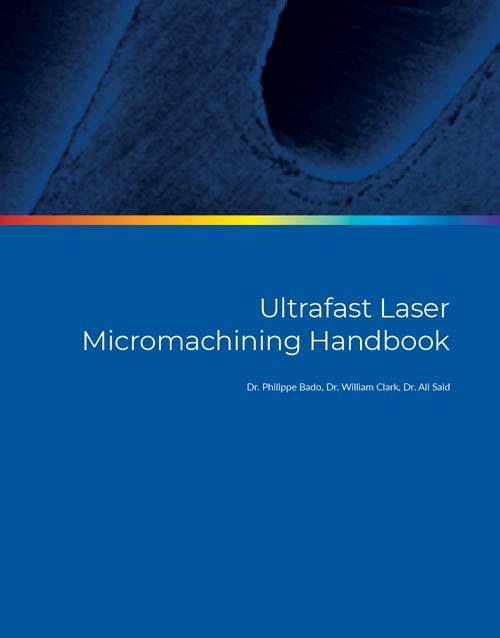Resources
Ultrafast Laser Micromachining Handbook
Dr. Philippe Bado, Dr. William Clark, Dr. Ali Said
From the Introduction
Machining materials with lasers – a technology first introduced in the early 1970’s – is now used routinely in many industries. Laser micromachining is a more recent development. First demonstrated in the 1980’s, micromachining with lasers is an evolving technology. Initially laser micromachining was based on continuous wave or long-pulse lasers. With these “conventional” lasers, the heat transferred from the laser beam to the work piece introduced numerous restrictions that limit the precision and the quality of the machining process. In other words, laser micromachining is… well, not so micro, but rather course by some of today’s standards. Machinists have learned ways to minimize the negative effects associated with heat transfer through various types of pre- and post-processing. These additional steps considerably increase the complexity and cost of the machining operation.
Handbook Contents
1.0 Introduction
2.0 Machining with Ultrafast Lasers
3.0 Machining with Long Pulses
4.0 Long Pulse Machining Example
5.0 Machining with Ultrafast Laser Pulses
6.0 Ultrafast Laser Machining Example
7.0 Contamination and Debris
8.0 Heat Affected Zone (HAZ).
9.0 Machining Accuracy
10.0 Sub-Micron Features
11.0 Machining Inside Bulk Material.
12.0 Introduction to Waveguides
13.0 Active Waveguides
14.0 Shortcomings of Femtosecond Lasers
15.0 Materials We’ve Machined
16.0 Conclusion
References
Glossary

